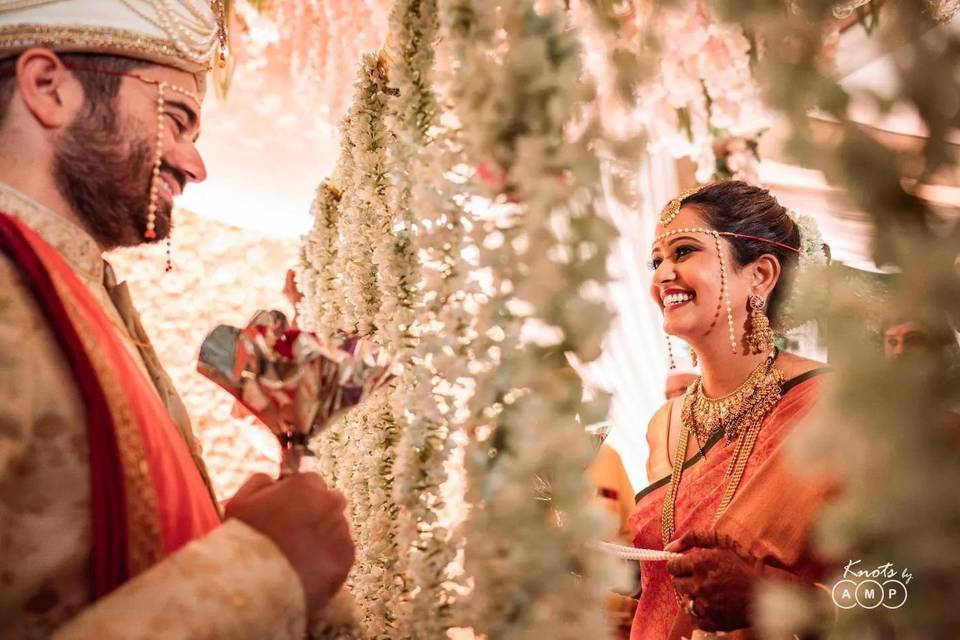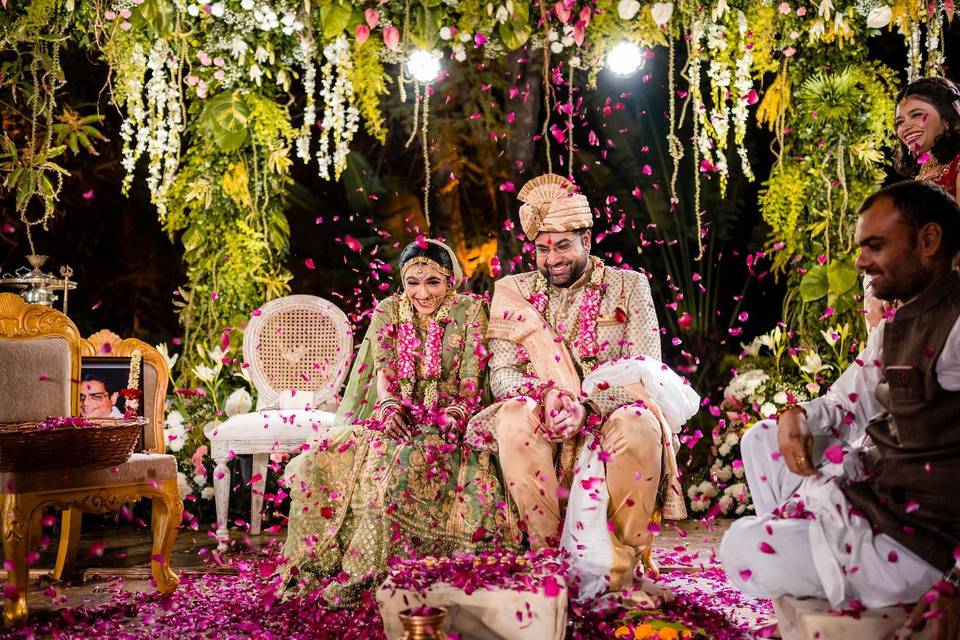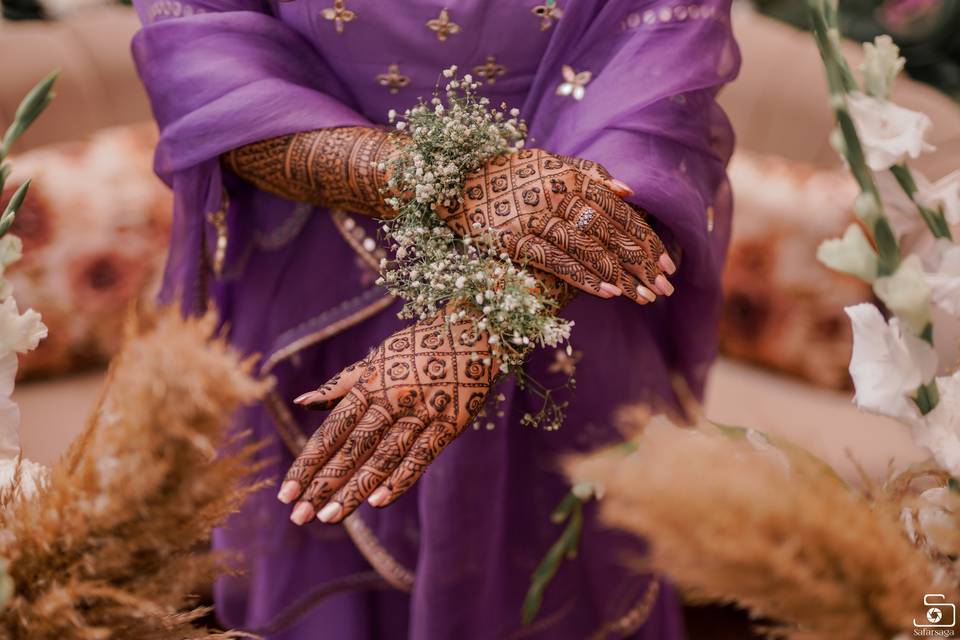Everything You Need To Know About The Saptapadi Tradition of An Indian Wedding
Let us make some important vows to each other on our wedding eve. Saptapadi, a customary of 7 steps, are important promises to each other for a harmonious wedded life forever.

Some Ritis (rituals) sound straight out of a romantic movie, but they indeed are as romantic as a Hindu wedding can get. Popularly known as ‘Saat Phere’ or Saptapadi, meaning seven steps, this ritual between the bride and the groom is what officiates the wedding ceremony as per Hindu marriage traditions. While we consider this tradition of the wedding to be a mere make-your-presence-known kind of a scenario, there is quite a deep meaning behind Saptapadi. You might be all ready to get married, but understanding what rituals you both are set to perform, understanding the meaning behind these rituals and accepting Saptapadi truly from the bottom of your heart are few of the things that make up for a more memorable wedding experience. Let us share everything you need to know about Saptapadi, the tradition, the meaning, the vows and the actual riti. Read on!
1. What is the meaning of Saptapadi?
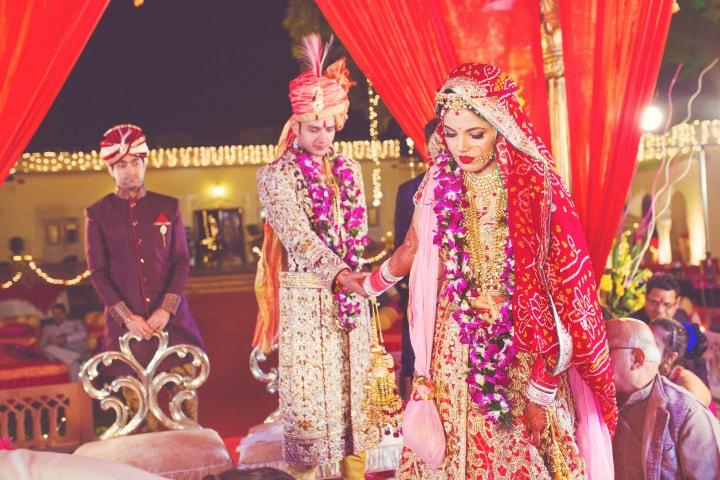
Image - Drafts Saptapadi, a Sanskrit word, means seven steps in English. In a more simpler or relatable way, Saptapadi is popularly known as Saat Phere, which basically means taking seven rounds around the fire by the bride and the groom. The rounds are taken around a pit of fire signifying God Agni and are performed in a signatory enclosed seating area called mandap. Each round or step signifies seven vows that the bride and the groom make to each other. These vows can be found in ancient Hindu scriptures and are considered the most sacred part of the entire wedding. The vows are based on a happy, respectful and harmonious married life.
2. What Indian cultures include Saptapadi as their wedding culture?
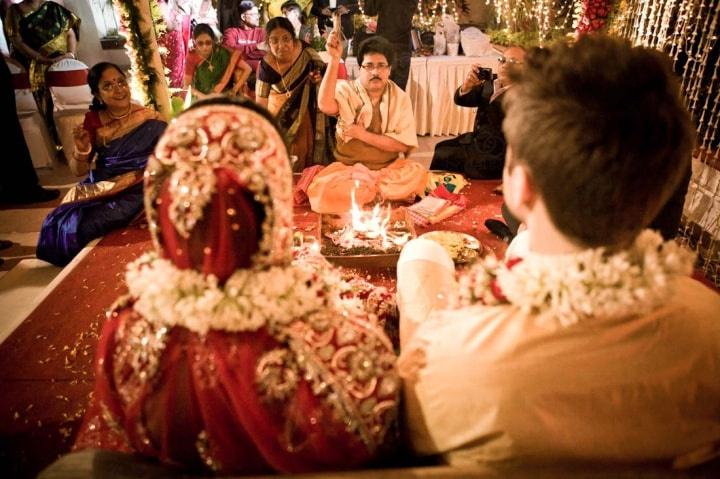
Majorly performed by the people of Hindu community, Saptapadi can be seen in Punjab, Bihar, Uttar Pradesh, West Bengal, Orrisa, Tamil Nadu, Kerala and all the other regions where Hinduism is followed. Although Saptapadi is addressed by different terms in different regions, the vows and ritual methods remain almost the same. The importance of fire or agni and the recital of vows under a star-studded night sky are two prominent factors in every Saptapadi ceremony.
3. What are the 7 vows and their meanings?

The first vow is for good health, a better household, acceptance of responsibilities towards each other’s families and respecting the long-followed cultural traditions. The second vow is to work towards a richer mental and spiritual self-existence together. The third vow is about the importance of wealth, a promise to earn it with full honesty. The fourth vow is about mutual understanding, respect towards each other, trust, happiness and a promise to self to acquire knowledge throughout life. The fifth promise is seeking blessings from the almighty for a fertile life and healthy children ahead. The sixth vow is for a healthy and long life. The seventh and the final vow is a promise to stay committed, honest and true to each other, for life.
4. How is the ceremony performed?

While small details of performing Saptapadi may vary from region to region, the alignment of steps to perform Saptapadi is mostly the same everywhere. The most important and the utmost step was taken to perform this ceremony is taking out the most auspicious timeline during the wedding eve to perform Saptapadi. It is done by the priest, taking into consideration the kundlis of both the bride and groom. Once the timeline to perform this Vidhi is set, all family members gather around the agni (fire), with the couple and their parents along with the priest seated nearest to the agni. Holding the pinky finger of the bride, the groom leads the first four vows, which is followed by the remaining three rounds concluded by the bride. While the couple performs Saptapadi, the families seated around the mandap, shower them with flowers and rice; signifying their blessings upon them. The Saptapadi ritual is concluded by reciting shlokas, seeking blessings from Lord Vishnu, the preserver of the world and Goddess Lakshmi of wealth. These shlokas bring Saptapadi ceremony to an end, depicting that the couple has vowed to remain with each other for seven lifetimes and that they are now officially and legally married.
5. Things To Remember While Performing Saptapadi

Take small steps while performing Saptapadi, so as to avoid tripping over. Ensure that you and your partner have enough space in the mandap to take rounds, avoiding being too near to the fire. Always pay extra attention to what the priest is reciting or the rituals he is asking you to perform. This will not only give you a better understanding of Saptapadi traditions but understanding these beautiful vows as you take will emotionally connect you with the wedding further. Disrespect of any kind during such ceremonies are often considered a dishonour for the family and their age-old traditions. Hence, keeping the wedding shenanigans at bay during the Saptapadi ceremony is of utmost importance.
6. What is worn for the Saptapadi ceremony?

Although many brides prefer proceeding for the Saptapadi in their wedding trousseau only, regional clothing rituals for Saptapadi ceremony varies. Post performing Varmala, attending guests and having dinner, the bride takes a break to change into her Saptapadi look. The Saptapadi clothing consists of a yellow-red saree, lighter gold jewellery and a simpler nose ring. Many brides in North and West India get to wear a headdress called Mukut throughout the Saptapadi ceremony. As for the groom, the attire remains the same throughout the wedding ceremonies. This is also the time when he takes off his shoes, leading to the unofficial Joota-Churai ceremony consisting of bridesmaids stealing the shoes and returning them for a small fee from the groom.
7. What happens next?

After the conclusion of Saptapadi ceremony and taking blessings of gods and goddesses, both the bride and the groom proceed towards seeking blessings from the elders of the family. In many regions, there are a certain set of shlokas that the couple recites post-Saptapadi, for each other. These recitals speak about accepting officially, in front of the family, that both the bride and the groom, have accepted each other as their partners for the next seven lives. They promise to be honest with each other, be there for each other in their thick and thin. They also promise to take care of each other, concluding the recitals by thanking the almighty and the five elements of the earth for their union. The Vidaai ceremony follows shortly which signifies the bride officially leaving her parent’s house towards her husband’s house.
Although Saptapadi vows remain the same everywhere, the priest reciting these vows on behalf of the couple often don’t adhere by one stamped numbering of the seven vows. Just like any other recitals, these vows too are recited out loud in Sanskirt language, however, many priests do indulge in explaining each vow in Hindi for the understanding of the couple and the audience. Saptapadi is also mostly considered to be performed at night, during the most auspicious hour of the wedding.
Hope after reading this information you are all prepared for your own Saptapadi ceremony. But if you think Saptapadi ceremony is performed differently in your family, tell us in the comments below.





